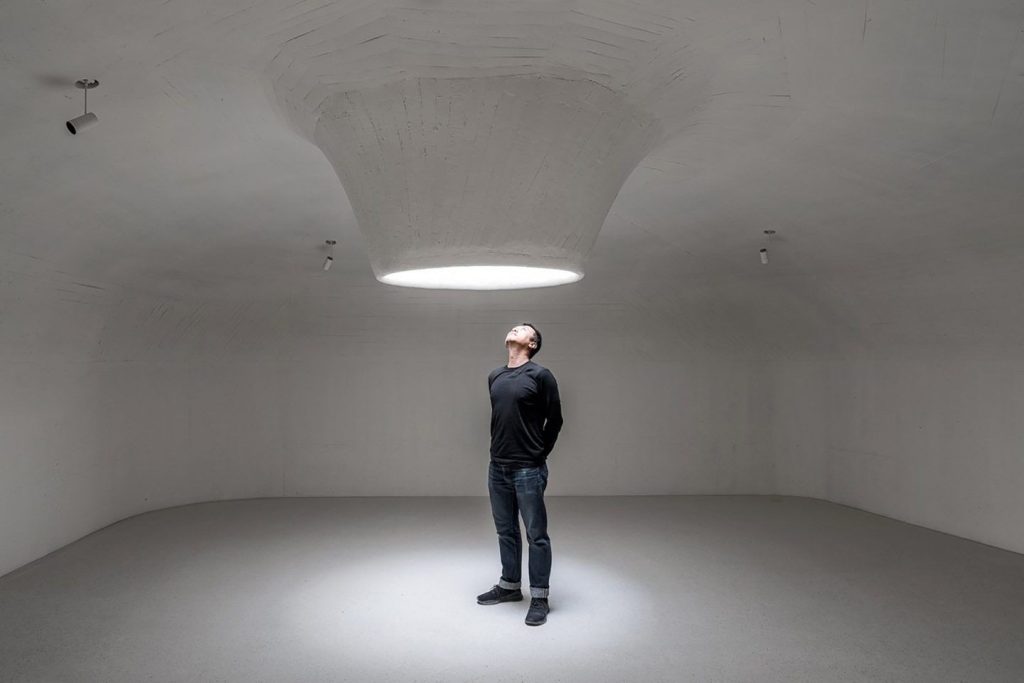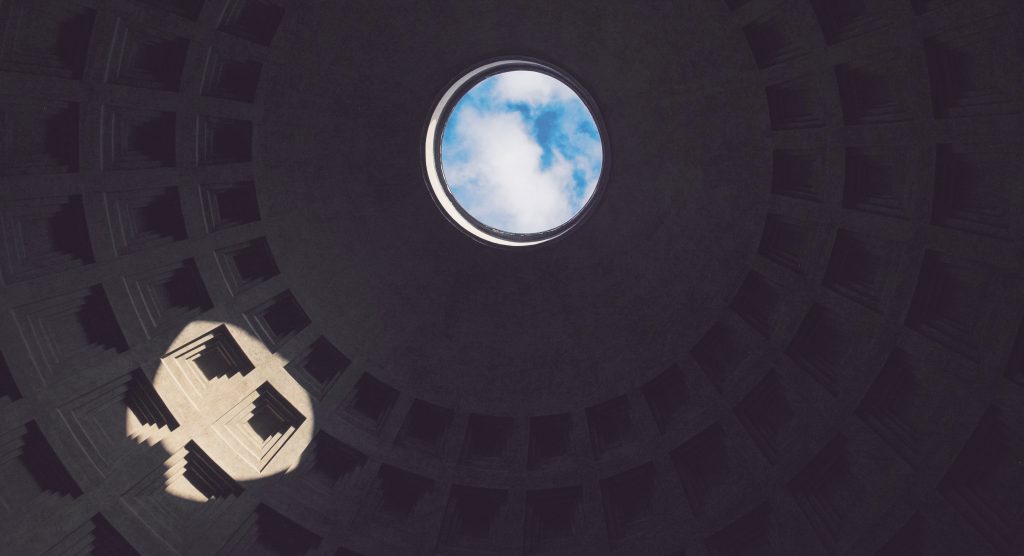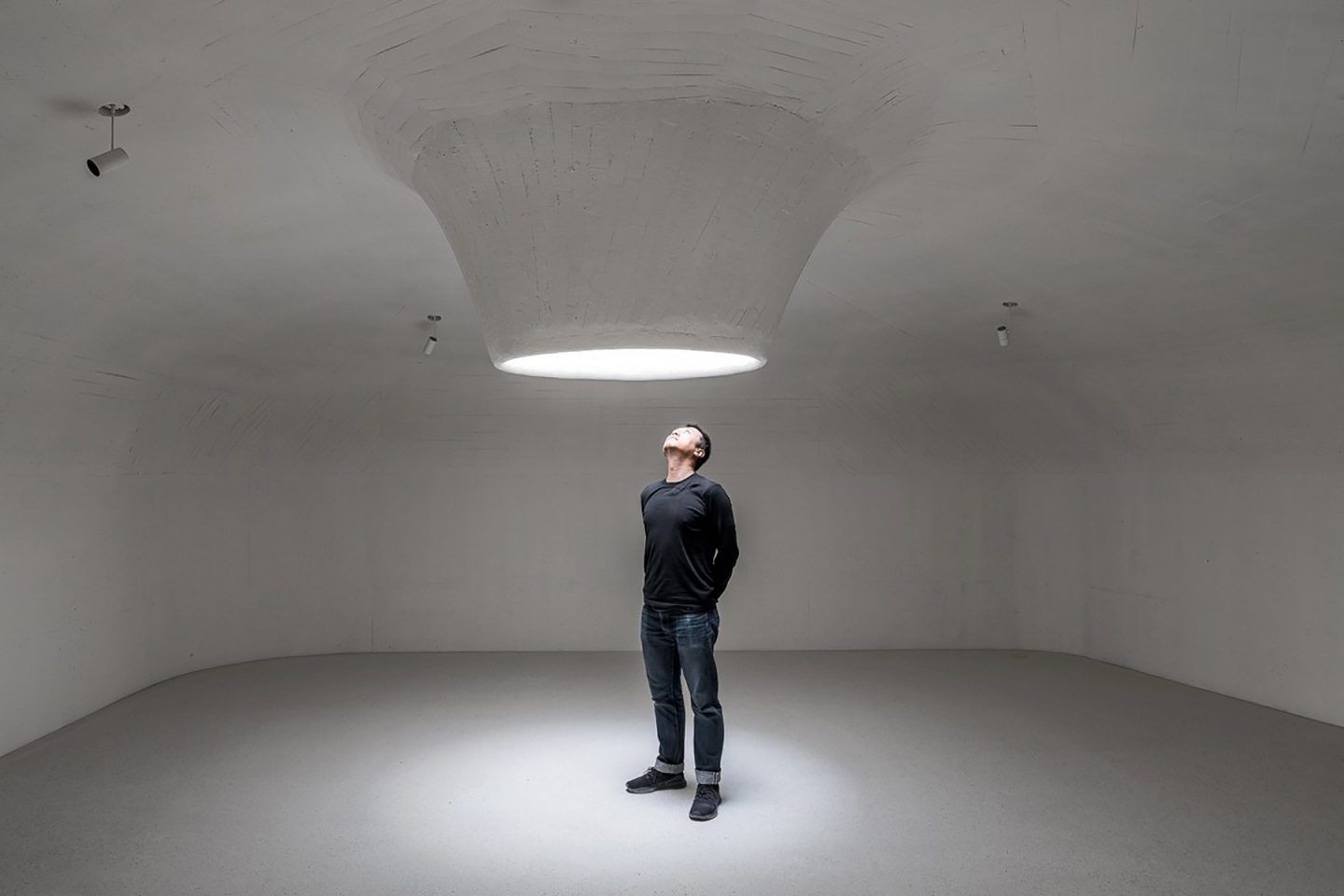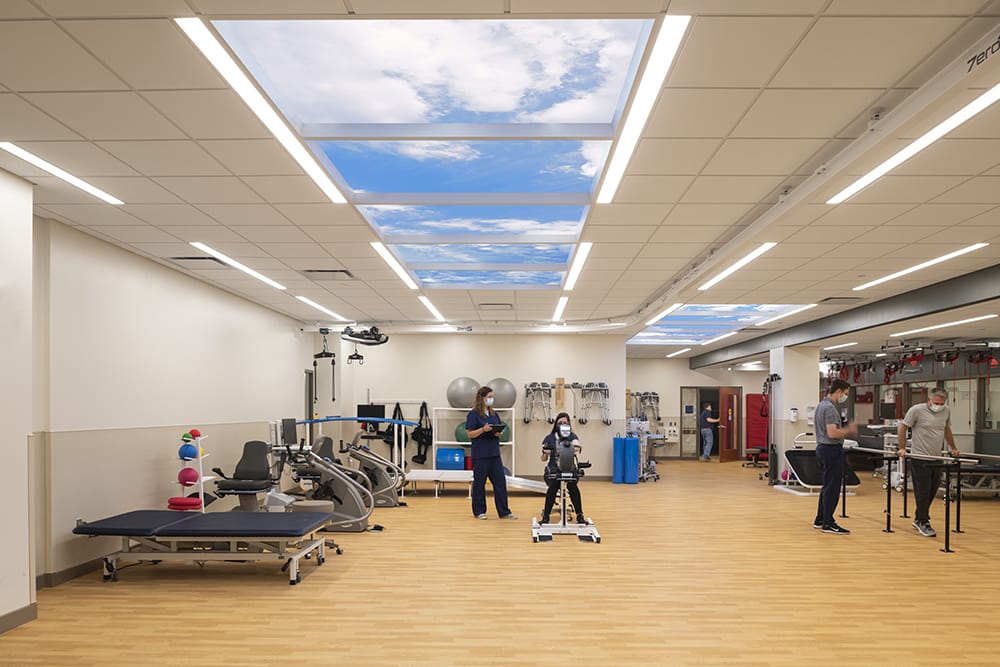Part I of this series discussed how the electrification of the built environment has left out some of the essential qualities inherent in daylight, spawning a search for solutions to reconnect our physiology with healthier daylight surrogates.
Since the emergence of tunable lighting systems, solid-state lighting (SSL) technology has perfected high CRI (color rendering index) white LED output with reliable phosphor compounds and remote phosphors. Current tunable systems can vary the correlated color temperature (CCT) of their luminous flux with controllable precision, helping to stem the tide against the less desirable effects of standard daylight LEDs and fluorescent lighting.
However, lighting research exploring the link between daylight exposure and circadian entrainment has proved to be more complex. At first, studies on Seasonal Affective Disorder (SAD) signaled that irradiance or light intensity exposure to cool white light (5,500 Kelvin) was the central key to entrain our body’s biological clock.
Over time, the debate evolved to include which photoreceptors, within the larger ecosystem of retinal cells in the mammalian eye, mattered most when it came to resetting our circadian rhythm. At first, researchers zeroed in on a fifth type of retinal photoreceptors that were not image-forming and respond to light intensity alone.

In time, a number of research teams, in partnership with lighting companies, have zeroed in on manipulating the abstract qualities of daylight––irradiance and color temperature––as the way forward. In recreating daylight’s color temperature changes in enclosed interiors, the biggest players have spawned a huge range of tunable fixtures.
Other groups have sought to incorporate these variables into window-like fixtures as a means to restore the original context of daylight, seeking to capture its spatial nature by using monitors or window-like fixtures with light blue screens that modulate their color temperature range.
While the notion of restoring daylight’s spatial attribute through a virtual window-like setting is a step in the right direction, it does not go far enough. In order to understand how the eye and brain processes daylight in a spatial context––such as our brain has done under the sky for thousands of years––a look at the mechanics of cognitive perception will prove illustrative.
Research in neuroscience shows that the structural and contextual cues of sensory stimuli engage different areas of the brain, a phenomenon observed even when the stimuli are identical. Hence, the context in which the eye and brain perceive visual stimuli, alters our perception and interpretation of it.
Given that our physiological reaction to light and space is pre-cognitive; that is, our autonomic nervous system reacts to light and its spatial attributes before we become conscious of their full impact, our first reaction to daylight (or a surrogate source) is ultimately chemical, neural, and visceral.

This means that if we’re to succeed in mimicking daylight, we must succeed in fooling not only the eye’s sensors, but also the brain. And, in this case, by the brain, we mean our memory’s embedded spatial maps of the sky and the associated autonomic nervous system response these maps elicit in the observer. In this sense, the biomimicry of daylight must convey much more sensory information than just daylight’s color temperature and intensity range.
A faithful daylight surrogate must also deliver the bi-sensory nature of daylight, it’s spatial, as well as its visual attributes. In light of this, visual illusions would be more suitable due to the properties of illusions that have an ability to hijack our physiology’s sensory processing apparatus and generate a perceived reality through counterfeit means.
Such an illusion of natural phenomena would necessarily go beyond reliance on a monochromatic window-like surface to frame and display the circadian arc of daylight. While some may note that a virtual skylight offering a square or rectangular blue opening should be considered an accurate, albeit minimalistic portrait of the sky, a closer study of our hardwired habits of perception may lead us to a different conclusion.
As the history of art bears out, visual artists are adept architectural illusionists, skilled in the art and science of how to move the eye of the observer through a defined, even framed surface. Artists (like magicians) know that what we see––both consciously and unconsciously––also reveals the process by which we glean essential properties about our environment from spatial cues.

For example, spatial cues such as scale, perspective, or spatial hierarchies contributed by architectural design may not always be salient when we walk into a room. Nonetheless, our hardwired habits of perception take note of them in their incessant labor of positioning our body vis-à-vis objects and landmarks in our surroundings.
Neuroscience research also confirms that our brain engages different areas of the cerebral cortex depending on whether the locus of our visual attention recognizes the stimulus as nearby or faraway. In other words, objects around our peripersonal and extra personal space such as a lamp, a potted plant, or even a framed art piece are perceived as objects in the space. On the other hand, a genuine view to nature or other expansive view is perceived as a scene.
This distinction is key for the designer of visual illusions for the illusion phenomenon only succeeds when we engage areas of the brain involved in spatial cognition and depth perception. That is, if we can seduce the eye and brain of the observer into attributing the spatial properties of a scene to an actual object, then we’ve succeeded in presenting a compositional tableau that squares up with our past experience of similar scenes. How best to present these cues requires a closer look at the principles of masterly composition.
Art, Digital Technology & Cognitive Mechanics
A visual illusion that seeks to elicit our memory’s biophilic recall of the sky would need to place our body in the proper relation to the perceived scene. As noted above, in order to engage the brain areas responsible for identifying a distant scene rather than a nearby object, our visual illusion needs to be built in a way that is seductively familiar.
The first step in this visual transformation begins with the photographic capture of the sky. The point of view (POV) of an appropriate sky image must be perpendicular to the ground, something that is seldom done in fine art photography because it is disorienting to the viewer, who is accustomed to viewing images on vertical walls.
However, when this POV is designed to be placed overhead, above the viewer, the perspective aligns with what our senses have learned, and remember, to expect. We may not be aware that our hardwired habits of perception use the morphological effects of gravity on our surroundings, particularly elements that tower over our bodies and whose shapes yield tell-tale signs of gravitational orientation, to balance our bodies.
In fact, our eyes and brain use daylight and the pattern of shadows it creates on foliage, landmarks, and even the landscape, to inform our sense of orientation, negotiate uneven terrain, and even mentally map out unseen locations from our vantage point.

Furthermore, both the scale and the elements depicted––cloud layers and/or overhanging foliage––are essential to underscore the contextual cues necessary to establish spatial polarity and engage areas of the brain involved in depth perception and spatial cognition.
Sky Factory artists include 20+ contextually relevant cues in every Open Sky Composition. The neurological effect of these compositional cues is confirmed by published fMRI research that found Open Sky Compositions to engage the cerebellum, an area of the brain often involved in spatial assessments. In other words, Open Sky Compositions are perceived as illusory skies, awakening our brain’s notion of viewing a distant scene, rather than registering a symbolic object, which occurs when we see a framed photograph or other nature-themed artwork depicting an exterior environment or scene.
Once the proper photography for the space is selected, the illusory image is ready to be placed within a sturdy perimeter. The perimeter acts as the structural point of reference in the interior environment where it provides a realistic, visual exit to a perceived natural exterior. Within the structural perimeter, behind the image panels, lies the cavity housing the custom LED starboards that crisscross the image and power the dynamic element of the virtual skylight’s daylight and circadian oscillations.
To delve into more technical issues associated with building a genuine circadian illusion, please see Part III of our I R I S Journal: Circadian Illusions: Playing with Light, Memory & Space.



